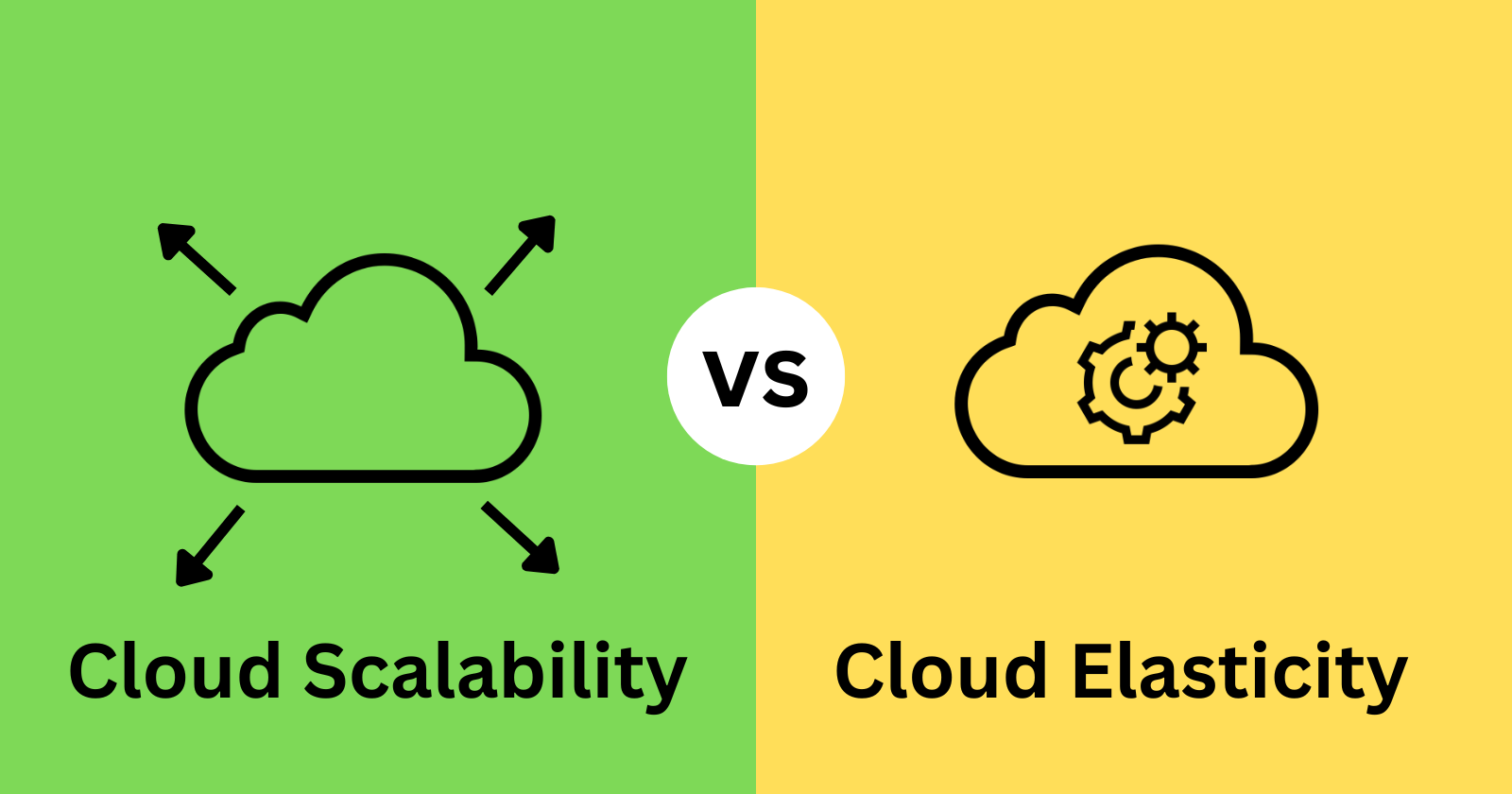Scalability vs. Elasticity in Cloud Computing
 Jasai Hansda
Jasai Hansda
Explore the differences and relationships between scalability and elasticity in cloud computing for efficient resource management.
Scalability
Definition:
Scalability is the ability of a system to handle an increasing amount of work by adding resources to the system. It involves the capacity to grow and manage increased demand by enhancing the performance of the system.
Types of Scalability:
Vertical Scalability (Scaling Up):
Explanation: Increasing the power of existing resources, such as upgrading the CPU, RAM, or storage of a server.
Example: Upgrading an EC2 instance from a t3.micro to a m5.large instance in AWS (increasing computing power).
Use Case: Useful for applications where performance can be improved by adding more resources to a single instance.
Horizontal Scalability (Scaling Out):
Explanation: Adding more instances of resources, such as more servers or virtual machines, to distribute the load.
Example: Adding more EC2 instances to an Auto Scaling group to handle increased web traffic (increasing the number of resources).
Use Case: Ideal for distributed systems, microservices, and stateless applications that can operate on multiple instances concurrently.
Key Characteristics:
Resource Management: Involves adding or improving resources to meet increasing demands.
Long-Term Growth: Focuses on long-term capacity planning and sustained increases in workload.
Infrastructure Changes: May require architectural adjustments to efficiently utilize additional resources.
Elasticity
Definition:
Elasticity is the ability of a system to automatically adjust resources to match the current demand. It involves the dynamic provisioning and de-provisioning of resources in response to real-time variations in workload.
Key Characteristics:
Dynamic Adjustments: Automatically adds or removes resources based on current demand.
Short-Term Fluctuations: Designed to handle short-term, unpredictable changes in workload.
Cost Efficiency: Helps optimize costs by allocating resources only when needed and releasing them when they are not.
Examples of Elasticity:
AWS Auto Scaling: Automatically adjusts the number of EC2 instances in response to changing demand.
AWS Lambda: Scales the number of concurrent executions based on the number of incoming requests.
Amazon RDS: Automatically scales database instances based on the current load.
Differences Between Elasticity and Scalability
| Differences | Scalability | Elasticity |
| Focus | Focuses on the system's capacity to handle increased workload over time by adding resources. | Focuses on the system's ability to dynamically adjust resources in real-time based on demand. |
| Resource Adjustment | May involve manual adjustments or predefined policies to add resources. | Involves automatic adjustments with minimal or no human intervention. |
| Use Cases | Suitable for long-term growth and predictable increases in workload. | Suitable for handling short-term fluctuations and unpredictable changes in demand. |
| Cost Implications | Requires planning for peak capacity, which may lead to underutilized resources during off-peak times. | Optimizes costs by ensuring resources are only used when needed, reducing waste and improving cost efficiency. |
How Scalability and Elasticity Work Together
While scalability and elasticity are distinct, they complement each other in cloud computing:
Scalability provides the foundation for a system to grow and handle more work by adding resources, making sure the infrastructure can manage larger amounts of tasks.
Elasticity builds on this foundation by automatically adjusting resources in real-time to match current demand, ensuring the best performance and cost-efficiency.
Example in AWS:
Scalability: A web application hosted on AWS may use an Auto Scaling group to scale out (add more EC2 instances) as the user base grows over time.
Elasticity: Within the Auto Scaling group, resources are automatically added or removed based on real-time traffic patterns, such as during a flash sale or promotional event, ensuring that the application can handle sudden spikes in traffic without over-provisioning resources.
Conclusion
Understanding the distinction and interplay between scalability and elasticity is crucial for effectively managing cloud resources. Scalability ensures that your system can grow to meet increasing demands, while elasticity ensures that resources are used efficiently by dynamically adjusting to real-time needs. Together, these concepts enable cloud-based applications to deliver reliable performance, cost-efficiency, and flexibility.
Subscribe to my newsletter
Read articles from Jasai Hansda directly inside your inbox. Subscribe to the newsletter, and don't miss out.
Written by

Jasai Hansda
Jasai Hansda
Software Engineer (2 years) | In-transition to DevOps. Passionate about building and deploying software efficiently. Eager to leverage my development background in the DevOps and cloud computing world. Open to new opportunities!